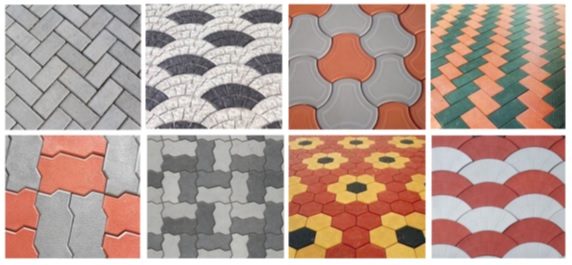
What Are Paver Blocks ?
Complete Guide To Paver Block Flooring , Paver Designs And Installation
Paver blocks, also known as concrete pavers or paving stones, They are manufactured in different shapes and colours and with different load-bearing capacities. Paver blocks offer excellent options for exterior floors due to their design options, durability, and speed of construction.
These pavers are made of concrete or other durable materials. They are commonly used in outdoor landscaping and hardscaping projects. Some of the most common applications include building pathways, driveways, walkways, patios, and other paved surfaces.
Paver blocks are designed to interlock with each other when laid in a specific pattern, creating a stable and durable surface. They come in various sizes, shapes, colors, and textures, allowing for a wide range of design possibilities.

Paver block flooring offers some major advantages in terms of simplicity of construction, durability, design options, color options, and rapid project construction. It is possible to manufacture these blocks as per the project requirements since they are manufactured under controlled conditions.
The manufacturing process of paver blocks involves mixing concrete or a combination of aggregates, cement, and other additives. The mixture is then poured into molds and compacted to create the desired shape and texture. After curing, the blocks are ready for installation.

Paver blocks offer several advantages over traditional asphalt or poured concrete surfaces. They are highly durable, resistant to cracking, and can withstand heavy loads. They are also relatively easy to install, repair, and replace. Broken and damaged blocks can be easily replaced. Additionally, the interlocking design allows for flexibility and prevents the growth of weeds between the blocks.
Paver blocks are a popular choice for creating aesthetically pleasing and functional outdoor surfaces that can enhance the appearance and value of residential and commercial properties.

The civil engineering terminology is a ready reckoner that includes the definitions of various technical terms used in the construction industry and home improvement DIY projects.
Concrete Floors - Paver Blocks
Concrete Pavers Designs , Shapes, Textures, Colors And Strengths
Paver blocks are manufactured in wide range of designs, colors, shapes, and strength. There are several commonly used shapes of paver blocks available in the market. These are just a few examples of the commonly used paver block shapes.
The availability of shapes may vary depending on the manufacturer and region. It’s always a good idea to explore different options and consult with professionals to choose the most suitable shape for your specific project.
Rectangle Blocks

Cobblestone Blocks

Milano Fan Blocks

Rectangle Blocks

Zigzag Blocks

Zigzag Blocks

Paver Blocks Installation Process
Installing paver blocks is a popular option for creating durable and visually appealing flooring surfaces for parking areas, driveways, walkways, patios, and more. The success of a flooring project depends on the installation process and technical skills.
The paver block shapes are designed in such a manner that the blocks are interlocked, which does not allow any lateral movement of the blocks. Therefore, blocks are simply installed on the specially prepared, firm ground without using any cement grout.

The interlocking property of the blocks ensures that they are firmly placed. This loose installation without using cement grout also allows for easy maintenance, and the damaged blocks can be very easily replaced.
Here’s a step-by-step guide on how to install paver blocks, along with some important tips and technical details:
- Planning And Preparation.
- Base Preparation.
- Base Material.
- Edge Restraints.
- Bedding Sand.
- Laying Paver Blocks.
- Cutting And Adjustments.
- Finishing Touches.


